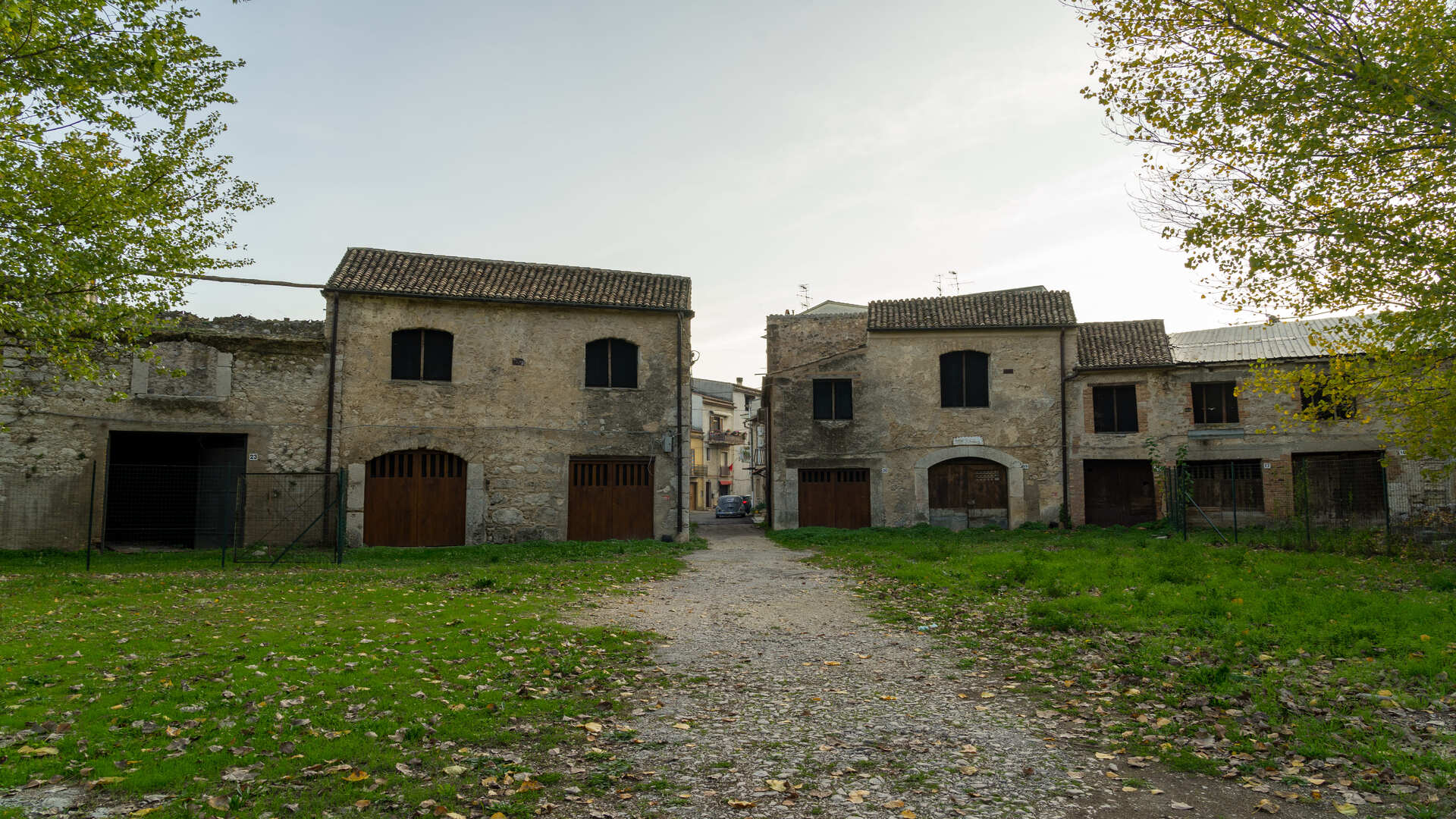The amphitheater of ancient Venafrum, called Verlascio or Verlasce following the vulgarization of the late antique term Perielasium (circular space), was built during the first century A.D. immediately outside the city. Preserved thanks to the overlapping of rural houses to the Roman ruins occurred during the seventeenth century, it remains perceptible the ancient volume, interrupted in three points from the access roads to the central space. There are still visible original traces of the walls in mixed work (with facings in lattice and brick) and among the most interesting materials that have emerged from the excavation there is the inscription that was reproduced on each entrance of the theater andrecalled the financial contribution made by a member of the important gens Vibia to the construction of the building.
Following the earthquake of 346 AD, which hit hard the Sannio and Campania, the town of Venafrum began to depopulate, with the abandonment of the western part of the settlement. At the dissolution of the Western Roman Empire, the population of Venafro moved permanently on the eastern hill.
From the survey of the currently existing structures, which are the result of a superimposition of medieval and seventeenth-century buildings on the original Roman plant, it is possible to reconstruct with sufficient approximation not only its shape but also its size. The ellipse that constituted the external perimeter had a greater diameter of about 110 meters and a smaller one of about 85 meters.
17 I Luoghi dela Storia - Anfiteatro Verlasce Venafro
Back 17 I Luoghi dela Storia - Anfiteatro Verlasce Venafro

Virtual tour
Location
Related resources
The places of history
The ideal itinerary covers the most important and suggestive stages that a passenger could possibly ride, from the mountains to the coast between Roman and Samnite archaeology, amphitheatres, underground cities, rural temples, remains of pictorial arts and museums.
